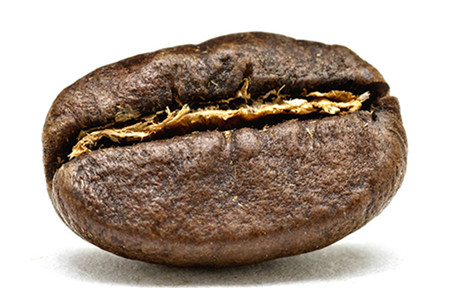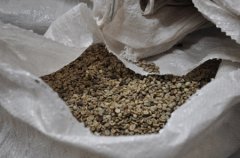Recommended boutique coffee-Guatemala Antigua coffee taste Antigua coffee
Coffee was really introduced into Guatemala in 1750 by Father Jesuit, where the coffee industry was developed by German colonists at the end of the 19th century. Today, most of the coffee industry's production takes place in the south of the country. Guatemala has seven main coffee producing areas: Antigua (Antigua), Cobain (Coban), Lake Attilan (Atitlan), Vevetnango (Huehuetenango), Farahan Plateau (Fraijanes), Oriente (Oliente) and San Marco (San Mareos). Each region has its own climate change, so the coffee beans in each region have their own characteristics, but to sum up, Guatemalan coffee has a mild and mellow overall texture and elegant aroma. With similar hot and pleasant acidity such as fruit acid, Guatemala has become an aristocrat in coffee. Coffee has won a lot of praise for Guatemala, especially Antigua coffee, which has a perfectly coordinated sour, sweet and mellow texture, coupled with a hint of smoke and a sense of mystery, and you will have a reason to stop looking for alternatives after tasting it. Antigua coffee is also known as "cigarette coffee" because of its unique charcoal incense.

Guatemala Antigua Flower Coffee
Antigua's "Antigua Flower God" is the best of Antigua coffee, which belongs to the famous beans of the well-known La Minita group. Produced by Las Pastores Beneficio, a well-known processing plant in Antigua.
Antigua Flower God comes from the high altitude in the center of the volcanic area of Antigua. Costa Rica's famous Raminita estate provides the industry's highest standard of planting and processing technology, and directly sends special personnel to Antigua to participate in quality control, and entrusts Antigua's largest Bastol washing treatment plant (Pastores mill) with the highest standard of post-harvest treatment, under the supervision of raw bean handling and cup testing control by Raminita quality control personnel. A strict procedure has been established, from purchasing coffee berries to washing, drying and drying, so it is not surprising that this coffee has an outstanding performance.
"Flower God" as its name, beans have a beautiful appearance, after brewing, there are fine flowers and fruit sweet, taste can feel cocoa bitter and caramel sweet, light smoky taste, red wine finish is obvious, the overall taste is clean and bright.
At present, some of the best quality coffee from Guatemala is exported to Japan, where each cup of coffee sells for $3 to $4. Moreover, Guatemala has specially set up a special coffee association and gives the greatest funding and attention to these high-quality Russian coffee. These efforts soon bear fruit. From October 2006 to May 2007, Guatemala's coffee exports accounted for 3.5% of the world's total coffee exports, making it the fifth largest coffee exporter in the world. The real beneficiaries of the development of the coffee industry in Guatemala are not only local coffee growers, but also coffee lovers all over the world.
Important Notice :
前街咖啡 FrontStreet Coffee has moved to new addredd:
FrontStreet Coffee Address: 315,Donghua East Road,GuangZhou
Tel:020 38364473
- Prev

Colombian Coffee introduction, a big is the absolute truth of the grading system Colombian coffee points
Colombia's coffee bean grading system is quite simple, judging its grade only by the size of the beans. Therefore, if you choose to buy Colombian coffee, just marking Supremo does not mean that its taste is also the best. Generally speaking, Colombian coffee produced in boutique bean producing areas will be marked with detailed information such as origin and manor. If it is not marked, it is generally.
- Next

Introduction of Coffee Bean producing areas-- Cuban Fine Coffee beans and Cuban Coffee grown in the Caribbean
Cuba is famous for producing sugar, tobacco and coffee, which was introduced from Haiti by the French in the mid-18th century. According to the size of coffee beans, the grades are divided into ETL (Super), TL (Intermediate) and AL (ordinary). The coffee beans produced in Cuba are rich in texture and have a strong smoky taste. In Cuba, the cultivation of coffee is regulated by the state. The best coffee growing area in Cuba
Related
- Does Rose Summer choose Blue, Green or Red? Detailed explanation of Rose Summer Coffee plots and Classification in Panamanian Jade Manor
- What is the difference between the origin, producing area, processing plant, cooperative and manor of coffee beans?
- How fine does the espresso powder fit? how to grind the espresso?
- Sca coffee roasting degree color card coffee roasting degree 8 roasting color values what do you mean?
- The practice of lattes: how to make lattes at home
- Introduction to Indonesian Fine Coffee beans-- Java Coffee producing area of Indonesian Arabica Coffee
- How much will the flavor of light and medium roasted rose summer be expressed? What baking level is rose summer suitable for?
- Introduction to the characteristics of washing, sun-drying or wet-planing coffee commonly used in Mantenin, Indonesia
- Price characteristics of Arabica Coffee Bean Starbucks introduction to Manning Coffee Bean Taste producing area Variety Manor
- What is the authentic Yega flavor? What are the flavor characteristics of the really excellent Yejasuffi coffee beans?

